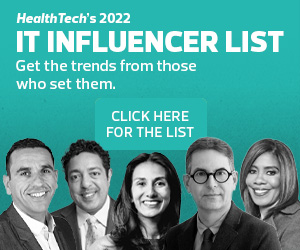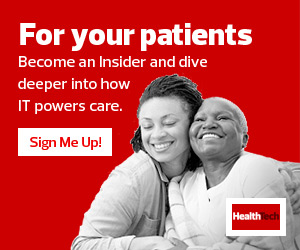HEALTHTECH: Give me an overview of your career. How did you become interested in digital health?
BHATT: I started as a medicine and pediatrics resident in the Harvard program. I mostly did it because I had the Norman Rockwell illustration of a physician in mind: able to care for anyone who walked through the door.
Even before then, here was a day at Yale University when I was in med school on the pediatric cardiology service, when we were called urgently to the adult service at Yale Med, which isn’t usual. The way I picture it, we walked in with long white coats flapping in the breeze, arriving on the adult floor to help an adult with congenital heart disease. This patient was born a blue baby but had now grown past age 18.
Then, we were just transitioning from having more kids with congenital heart disease to them doing so well in pediatrics that we had more adults with congenital heart disease. That became a love of mine. I chose to use my medicine and pediatrics career then to further train in cardiology and specifically take care of this population.
LEARN MORE: How virtual care expands patient access and engagement in pediatrics.
I started practicing in that field in 2009 at Mass General Hospital. Around 2013, it dawned on me that a lot of those young adults live very far away from the major hospital centers in major cities. In addition, they were young, with busy lives, school, and some were recently married with kids and a job. It was quite hard for them to get all the way in to see me.
That was right when stroke care in the Northeast, thanks to Mass General, was changing to a virtual model. We were using telemedicine to help stroke survivors at hospitals in rural areas who didn’t have access by providing supervised medical care. I thought, “Gee, this is great.” So, when they asked, “Does anybody else want to try this virtual visit form of telemedicine?” I said yes, because I wanted to deliver care to my patients in the communities where they lived rather than making them come to me.
That’s how it began. I had a clinic one day a week beginning in 2013, where my patients and I would see each other virtually. That’s how I first came into this idea of innovation in medicine and transformation of the healthcare delivery system. Once you start doing that, you think, “What else can I do for you in the community where you live to optimize the quality of your medical care?”
I progressively became interested in digital health and was focusing on it in addition to my day job of seeing patients in the hospital and being on call. Virtual care became my passion. However, from 2013 to 2020, nobody really wanted to join me in this effort. I tried to tell people how great it was, but the fact that people would have to change their workflows and how they thought about medicine was just too much to take on in addition to the other demands of being a physician.
RELATED: Find out how to build patient trust with access to digital-first healthcare.
Then, in 2020, when COVID happened and people had to see their patients at a distance, suddenly there was an opportunity for those of us who had been innovating on the sidelines to help people understand the value of digital health, telemedicine and innovating healthcare delivery.
It also allowed us to create the workflows and infrastructure that nobody had invested in before. We were able to say, “This kind of innovation is important. Delivering care in the communities where people live is important. Therefore, we will create an infrastructure that makes that happen.” That’s how I ended up where I am today.
HEALTHTECH: What are some of the biggest challenges you’re seeing in today’s digital health space, and what steps do you think healthcare organizations can take to overcome those?
BHATT: I think one of the most important facets of moving forward and being successful in digital health will be crossing silos and working across industries. We’ve done a lot of work independently in academic institutions, startups and engineering schools, but it’s time for us to ensure that when an engineer has an idea, there is a clinician there at the table helping them see how it will reach the patient. There need to be providers, payers or systems at the table saying, “Here is how we can fit this in or create an infrastructure around this to help it actually be delivered to the point of care.”
We need all these groups to work together. Venture capital and private equity are putting a lot of money into some great ideas. They need to meet with individuals or groups like our own that have the clinical insights into what the market looks like and what cardiologists are experiencing. When we put that knowledge together, we’re that much more likely to create models of care and invest in technologies that will be usable.
I think that’s both the biggest challenge and the biggest opportunity. There is so much growth in digital health, but if that growth is running parallel to the practice of medicine and the delivery of healthcare, then to try and shove those two together is going to be very hard.














